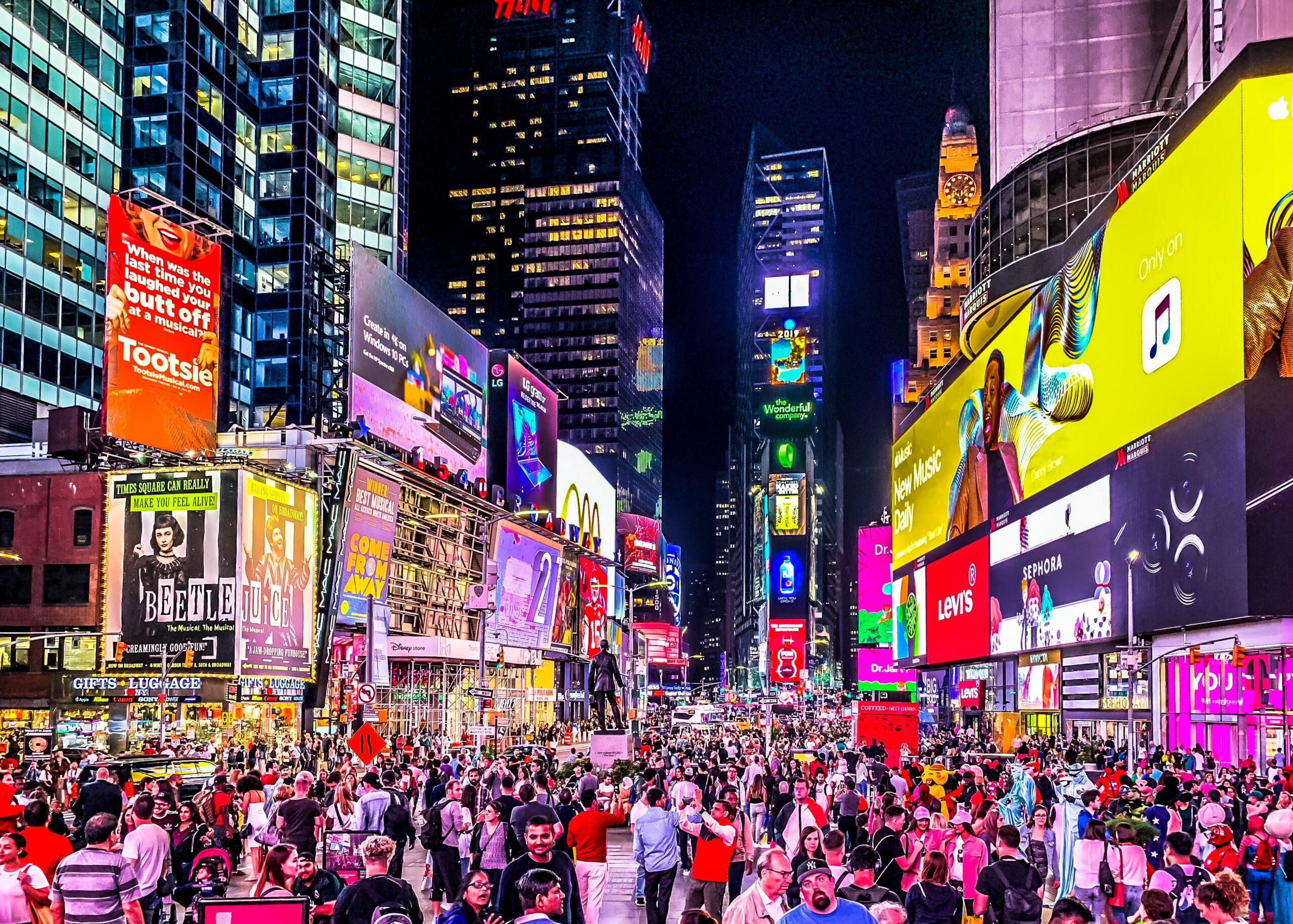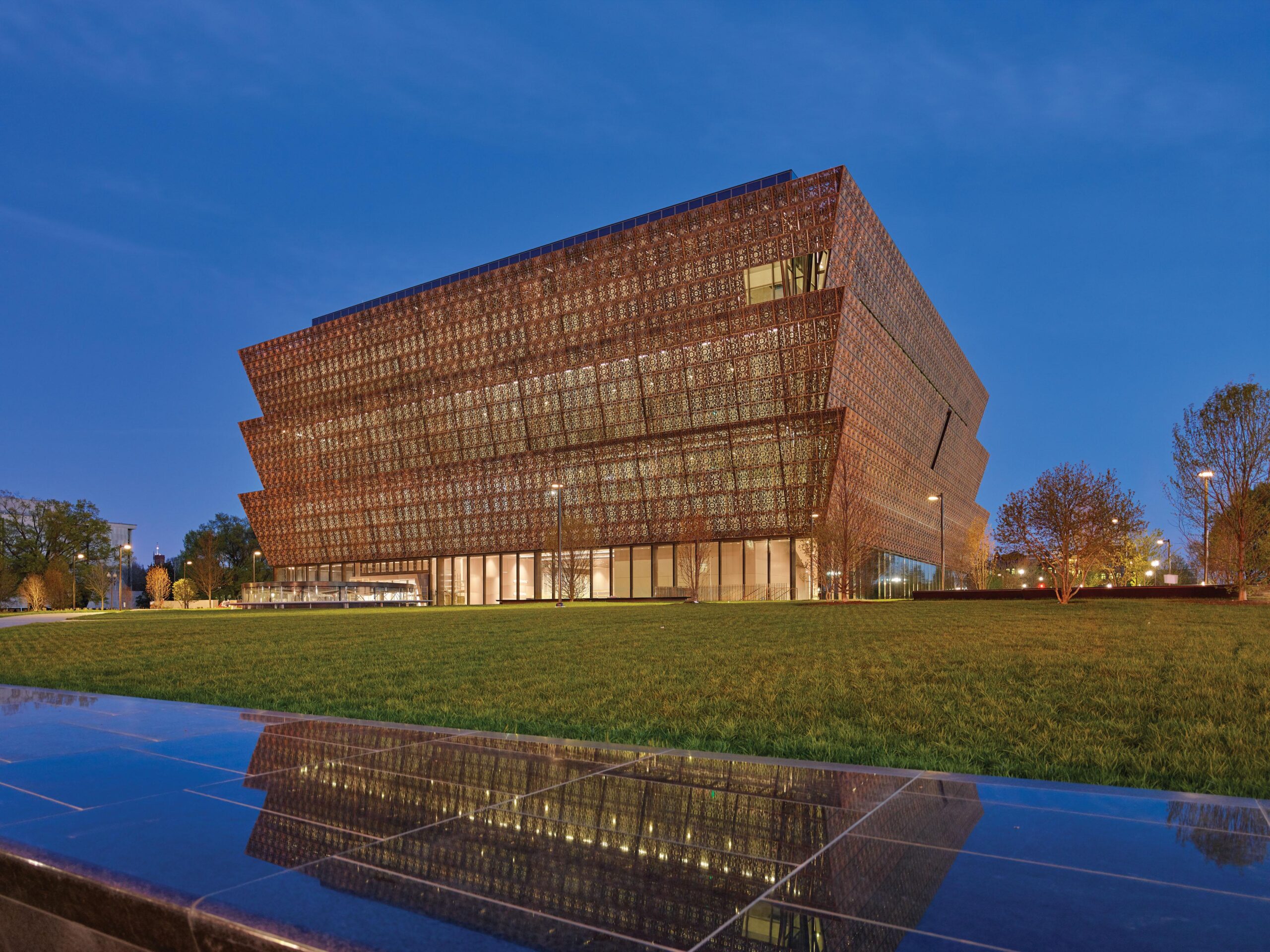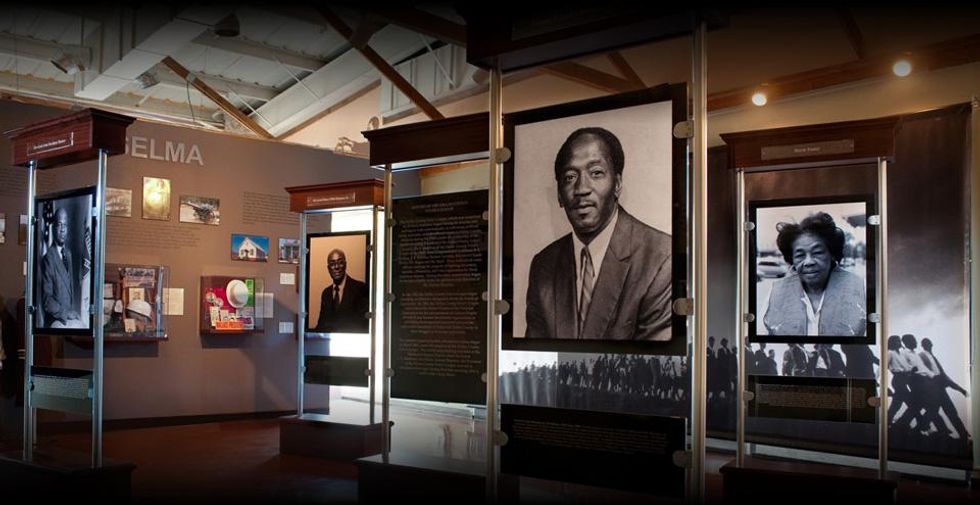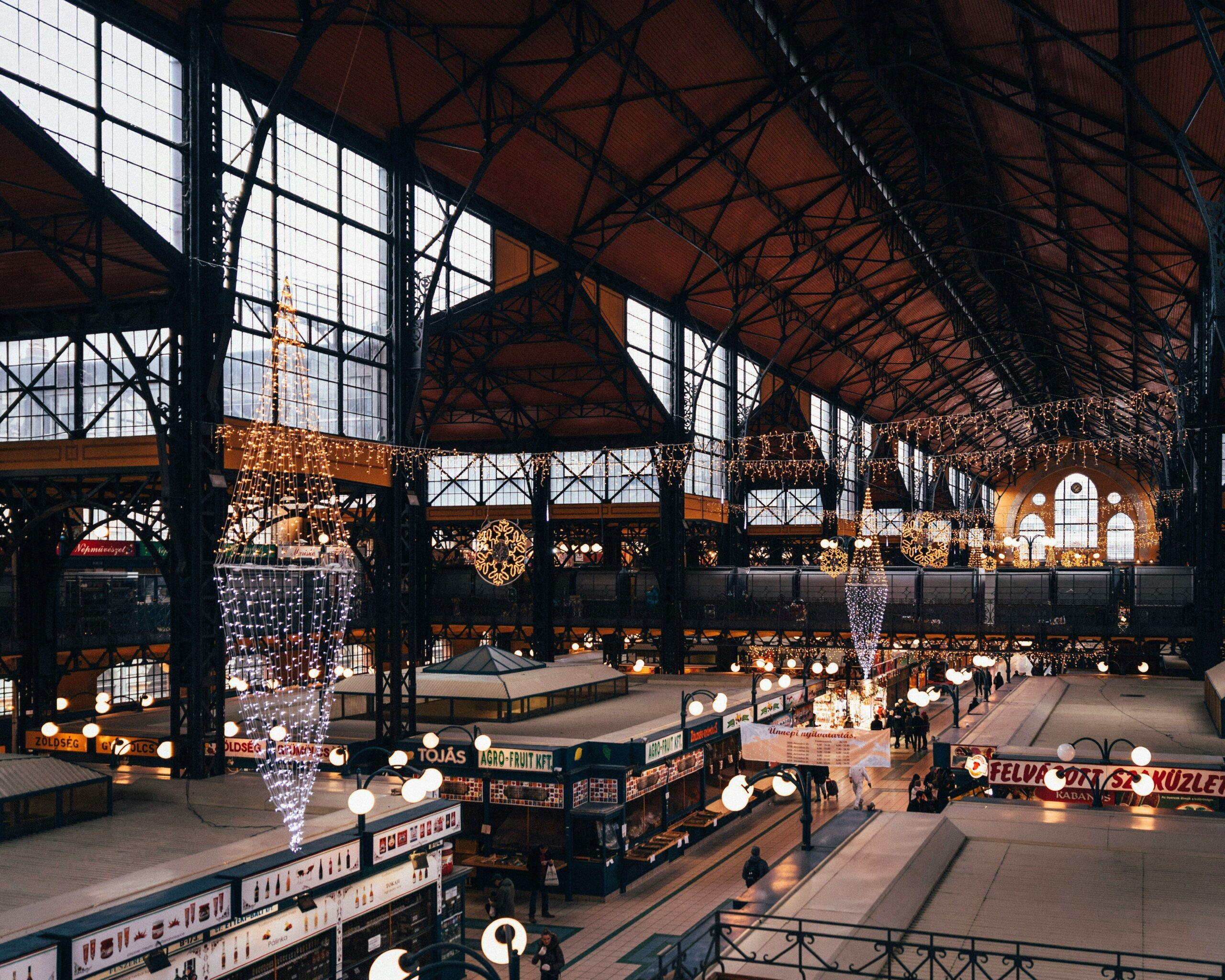
14 Black History and Culture Museums and Galleries to Visit in 2023

National Museum of African American History and Culture
By Alan Karchmer via the National Museum of African American History and Culture Press Room

February is supposed to be a time of reflection and education on Black History in the US, but due to Conservative panic at the idea of critical race theory, often many of the lessons we are taught are sanitized and reductive. And we’re all grown now. It’s time to stop blaming our lackluster US History classes for our lack of knowledge about the nuances of race in the US.
Black History Month has also become increasingly commercialized with corporations offering platitudes about “togetherness” while employing racist business practices and company culture. Even newer holidays like Juneteenth have already inspired cheap, tacky merch and commercial content from big brands (we’re looking at you, Walmart).
So try to connect deeper to history and the social/political climate this month than watching a Marvel movie with a Black superhero in it. Read a book by a Black author. Support young, Black artists. And visiting Black History and culture museums.
Visit museums that focus on Black history and culture and stay aware of the country’s history. From civil rights to modern art, there’s a wide range of Black museums to support as we integrate active anti-racism into all aspects of our lives.
For enriching and educational experiences, visit some of the most notable museums and galleries that give substantive insight on Black American stories past and present:
National Museum of African American History and Culture — Washington DC
The most comprehensive museum of Black American history is undoubtedly the National Museum of African American History and Culture in Washington DC. Unveiled in 2016, the museum took 13 years to be realized and is worth the wait.
The NMAAHC believes that “there are few things as powerful and as important as a people, as a nation that is steeped in its history.” The giant museum chronicles the history of African Americans in the context of broader American history, explicitly wrestling with questions of liberty, justice, and freedom in the wake of continued oppression.
Hannah Traore Gallery
This 1-year old Lower East Side gallery is a marvel of contemporary Black art. Hannah Traore founded the space at just 27 years old to showcase artists who have been historically marginalized from the mainstream narrative. It’s a refreshing take on the gallery world with vibrant exhibits all curated with love.
Schomburg Center for Research in Black Culture — Harlem, NY
The crown jewel of the New York Public Library system is also one of its most underrated landmarks: the Schomburg Center for Research in Black Culture. The Schomberg is a primary resource for Black literature, scholarship, and theory. It facilitates research and houses exhibitions about the history of Blackness in America with its deep archives and immersive displays.
Studio Museum — Harlem, NY
Since 1968, the Studio Museum has been championing Black art from its home in Harlem. The Studio Museum houses a collection of Black contemporary art, as well as a rich archive of Black art spanning many decades and eras. The Studio Museum is also responsible for launching the careers of many contemporary Black artists with its Artist-in-Residence program.
As a reflection of contemporary Black culture, the Studio Museum is a must-see for art lovers and museum lovers in New York City. So, yes, go to the Met and the Guggenheim, but head further uptown to the site of the Harlem Renaissance and experience the past and present of Black art.
Nicola Vassell Gallery
Nicola Vassell is a giant in the art world and recently opened her own gallery in New York City, joining the growing initiative for Black Owned art galleries. While New York has no shortage of galleries, there is a glaring gap in the market for Black art. Using her connections from her past as a curatorial director, Vassell’s widening the lens and changing the gaze of the art world one spectacular exhibition at a time.
52 Walker Gallery — Lower Manhattan, NY
One of the biggest gallery names in New York is David Zwirner. In response to the call for more diversity in the art world, David Zwirner sponsored the opening of this new gallery to support Black artists, curators, and young aspiring art lovers. Curator and educator Ebony L. Haynes is at the helm of the project, pioneering the effort to make riskier choices and move gradually and intentionally. The slate of shows is refreshing and sure to bring fresh artistic energy to Lower Manhattan.
Motown Museum — Detroit, Michigan
You know the sound, you know the names — Aretha Franklin, Gladys Knight, The Jackson 5, Marvin Gaye, the Supremes, and even more — but do you know their stories? The Motown Museum is a global destination which chronicles the birth of the sound that changed music as we know it. The preservation of the Motown Museum is a celebration of one of the most influential parts of global Black culture and a testament to the people who made the music that is so embedded in our lives.
California African American Museum — Los Angeles
The California African American Museum chronicles Black American culture with archives that go as deep as the 1800s. Its permanent collection and rotating exhibits come together to make it one of the most comprehensive and dynamic museums in the country.
CAAM has an emphatic focus on the representation of women with an annual social media initiative called #5WomenArtists. This intersectionality is at the core of the museum’s mission and is reflected in its curation, which is designed to remind us about the importance of representation in all areas.
National Civil Rights Museum — Memphis, Tennessee
Located steps away from the Lorraine Motel in Memphis where Rev Dr Martin Luther King Jr. was shot and killed in 1986, the National Civil Rights Museum in Memphis is a testament to the Civil Rights Era. Telling the story of the Black American journey to liberation, the museum traces the history from the slavery era through to Jim Crow and the Civil Rights movement.
In the US, these periods have been packaged into a sterilized narrative which does not do justice to the lived experiences of Black people nor the formations of the structures which still implicate so much of our lives today. The National Civil Rights Museum aims to make those realities feel more immediate through a dynamic mix of artifacts and exhibits. These are juxtaposed against more active experiences such as oral histories, videos, and immersive activities like reenactments of the Montgomery Bus Boycotts. There’s even an opportunity to sit at the original lunch counter from the 1960 Greensboro sit-ins.
The National Voting Rights Museum and Institute — Selma, Alabama

via the National Voting Rights Museum
When the 2020 election focused heavily on voters’ rights, mobility, and registration, it emphasized the history of voting inequality in America. Contemporary activists like Stacey Abrams are vocal about the systematic roots of voting disenfranchisement and take cues from activists of yore, but most people aren’t taught the nuances of the Voting Rights Movement and its effects today.
Selma, famous for the 1965 MLK march to Montgomery, is home of The National Voting Rights Museum, which aims to keep this history alive and urge us to keep doing the work. The site is right on the bridge and houses artifacts from the march itself, including not merely photos, but torn clothing and footprints from where the state troopers incited violence at the 1965 march.
Whitney Plantation — Wallace, Louisiana
The Whitney Plantation is a one-of-a-kind tribute to enslaved people. While many plantations are still standing — and often they are sites for parties, weddings, debutante balls and more in the South — none have been converted with the care and purpose of the Whitney Plantation. The 2000-acre property sits near the Mississippi river and was owned by enslavers until 1867.
The property was the first official slavery museum in America to be housed in a plantation. It’s a joint project of the museum’s director of research, Ibrahima Seck, and the property owner John Cummings, a retired white lawyer who was startled by his own ignorance of the history of slavery. The immersive experience focuses on honoring the lives of enslaved people by directly confronting the reality of the institution of slavery. Visitors are each greeted with a card that says the name of an enslaved person. Visitors and are encouraged at all steps to remind themselves of the humanity of the person behind the name while confronting the horror that person experienced.
The Legacy Museum: From Enslavement to Mass Incarceration / The National Memorial for Peace and Justice — Montgomery, Alabama
New to mainstream conversation is the movement around defunding the police and abolishing prisons. However, abolitionists and activists have been fighting for this progress for decades. Statistics and research prove that Black Americans are disproportionately likely to be incarcerated. The Legacy Museum explains this phenomenon through the legacy of slavery.
Opened by the Equal Justice Initiative, the museum shines a light on the horrors of slavery and well as an equally unflinching view about the present injustices of the prison system. After groundbreaking films like 13th and books like Michelle Alexander’s exceptional The New Jim Crow, a visit to the Legacy Museum is a visceral reminder of the realities of contemporary oppression.
Museum Of The African Diaspora — San Francisco, CA
The landscape of Black Americans is diverse and varied and the MOAD, an affiliate of the Smithsonian, finds its focus in the global lens of the African Diaspora. The museum explores the nuances of the Transatlantic Slave Trade, as well as the contemporary African diaspora. It also sheds light on different eras and diverse movement patterns to emphasize that Blackness is not a monolith and to promote a more global way of looking at activism.
Honoring Black history and culture beyond federal holidays, which are often devoid of context, is an excellent way to immerse ourselves in anti-racism. Black culture museums are constant reminders for us to think more deeply about intersectionality, history, and systemic oppression in our everyday lives.


